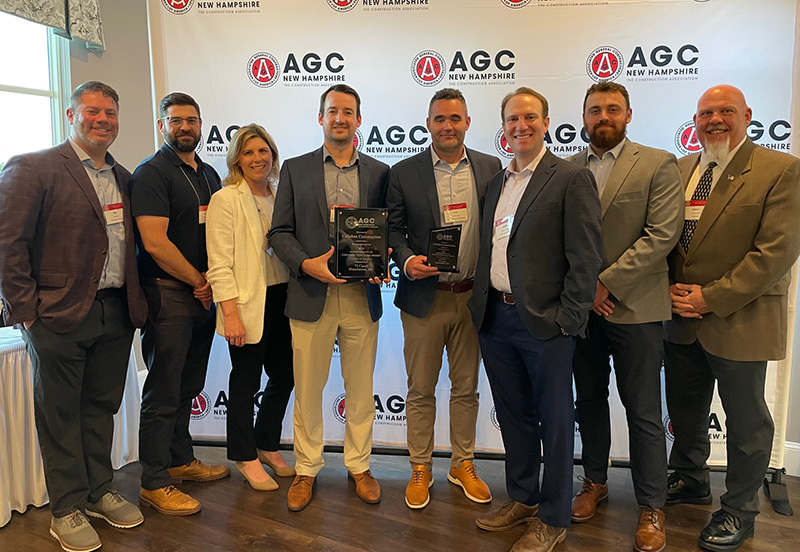News: Construction Design & Engineering
Posted: November 19, 2007
Greening existing buildings: Long term annuity starts today
The drumbeat of green initiatives is growing louder by the day. Private and public institutions alike are increasingly looking for ways to decrease the environmental impact of the buildings they own and manage.
When considering how to make a building "greener" or more sustainable, organizations often focus first on energy usage, since energy accounts for a significant portion of building operating expenses. But the benefits of implementing energy savings measures - from lighting controls to more efficient boilers -extend beyond cost savings. Reducing energy usage with the existing building stock can deliver large-scale environmental benefits. In the U.S. alone, commercial buildings account for nearly 50% of the energy consumed and over 40% of carbon dioxide emissions reductions. Building owners and managers can also improve the sustainability of facilities through a variety of other initiatives, from employing green cleaning products to implementing water conservation measures.
At the end of the day, the many potential greening initiatives an organization can undertake compete with a myriad of other capital and operational investments - for renewing building systems, completing building renovations, and undertaking new construction. An evaluation of buildings should address sustainable practices in place today, and identify options for improving the building's sustainability and performance. By comparing the associated costs and expected impact of these initiatives, organizations can determine which investments will optimally support sustainable facilities and provide the greatest results over the short and long term.
Determining which green initiatives will provide the greatest impact - both in operational savings and environmental benefits - requires an evaluation of five key areas of building operation- energy performance, materials and construction, water conservation, indoor air quality and environment, and site sustainability.
An analysis of energy performance, including electrical and mechanical systems and renewable energy sources, should target recommended actions to reduce operating and consumption costs and decrease carbon emissions. Identifying energy savings opportunities can free up dollars to spend on other sustainability improvements such as interior retrofits that improve the quality of the environment for the occupants. Opportunities in this area often center on light quality, heating/cooling controls, enhancing use of low-emission materials, and reducing or eliminating ozone depleting gases from HVAC, refrigeration and fire suppression systems.
When embarking on a major building renovation or even a straight system replacement such as a roof, reducing landfill waste by using construction waste recycling programs and choosing building materials with the shortest distance from source to site will yield both cost and environmental savings. Water treatment, consumption and waste system conservation technologies and products are more frequently used today as the mainstream public is becoming more aware of water resource issues. Green opportunities don't stop at the walls of the building.
Organizations have opportunities for promoting a more sustainable building site by looking at ways to employ exterior lighting more effectively, alter landscaping to reduce erosion and water consumption, and reduce the overall heat footprint of the site by changing surface materials.
Once a building owner has determined the long-term strategic plan for the building, whether it will undergo a major renovation or continue as occupied with no major change, greening opportunities will become clearer within the context of the future. By incorporating green into ongoing building maintenance and capital improvement programs, organizations can view greening existing buildings as an investment that begins today and a long term financial and environmental annuity.
Lisa Raffin is vice president of professional services at VFA, Boston, Mass.
MORE FROM Construction Design & Engineering
Nobis Group awards Robinson and Moreira STEM scholarships
Concord, NH Nobis Group, a 100% employee-owned consulting firm specializing in engineering and environmental solutions across the Northeast, has named the recipients of its 2025 STEM Scholarship: Andie Moreira of

Columns and Thought Leadership

Careers in Construction Month focus on training and safety - by Joe Camilo
October is Careers in Construction Month, and rarely has it been more consequential. According to our chapter’s national parent organization, the construction industry needs to attract half-a-million new workers in the coming year to meet demand. Addressing that need is a huge job, but we at ABC MA are trying to do our part.

The rise of incubators and co-working spaces: The latest in life sciences - by Matt Combs
In recent years, the life science industry has witnessed a shift in how companies operate and innovate. One of the key driving forces behind this transformation is the emergence of incubators and co-working spaces specifically tailored to meet the unique budget and schedule needs of startups.

The design-build advantage: Integrated interior design solutions - by Parker Snyder
When it comes to corporate interior spaces for both commercial and industrial projects, partnering with a design-build firm with in-house interior design services can offer clients many benefits. Unlike traditional delivery methods where interior designers operate independently from the design and construction teams, often creating a longer project timeline as cost negotiations and revisions ensue

Ask the Electrician: Is summer a prime time for commercial electrical maintenance?
The answer is “Yes!” While January marks the official new year, many businesses view September as a fresh start. This makes summer an ideal time for commercial property owners to schedule long-term electrical maintenance projects.







